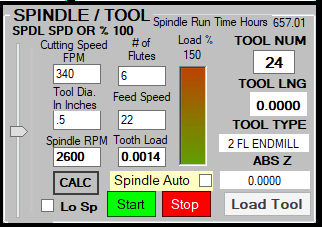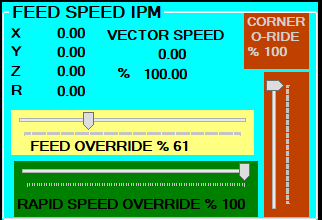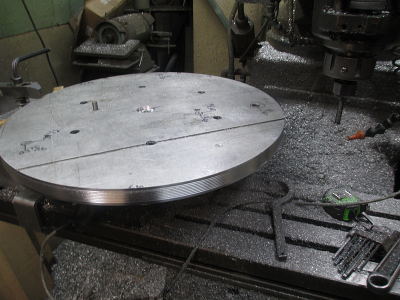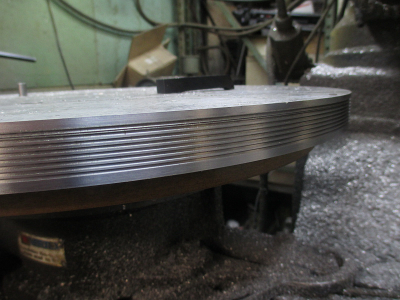I missed something there, probably because I don't know G-code. What basis (diameter?) is the G-code using for turn rate on the rotary table? Sorry if this is a novice question, I have ambitions of getting into CNC at some point, but that has not yet happened.
This value would normally be calculated by the CAM software as a function of the tool path at a particular radius from the RT center, assuming the CAM software is capable of doing a 4 or 5 axis toolpath calculation. Since I do not have the 5 axis plugin for Fusion 360, the CAM software can not calculate the feed speed.
Also, the CNC software would have to be capable of using the CAM generated feed speed to achieve to correct speed, which mine can not do. I use it so infrequently that I haven't bothered to add that feature to my software.
In my CNC lathe software I do have that feature built in where I can maintain a constant cutting speed in FPM, based on the part diameter. And the CAM software can specify RPM or Constant Surface Speed, specified in FT/Min. Using constant surface speed means that the spindle speed is constantly changing, within a minimum and maximum limit, based on the tool X position. The math is a little crazy, and updates the spindle speed every 5ms.
In this case I just hand wrote the G code for this operation, and did a quick back of the napkin calculation to get somewhere in the ballpark. Then did the final adjustment with the feed speed slider. In this case, 22 IPM on the circumference of the 20'' part, equates to about 6 IPM for a normal X/Y vector move. So in the G code below, after adjusting the speed override slider, the Y moves were actually made at about 6 IPM rather than the 10 IPM as commanded in the G code.
(GROOVE 1, PASS 1)
G0 X10.213 Y-1.850 Z0.6 ( G0 'rapid' move to start position)
G0 Z-0.112 (rapid down to 0.100'' above working height)
G1 Z-0.212 F10. (G1 'normal cutting' feed down to working height, Feed = 10 IPM)
G1 Y0.0 A-90.0 F10. (lead in move, feed Y to 0 while rotating to 90 deg on the RT, makes a nice smooth entry into the cut)
G1 Y0.0 A-450.0 F10. (main cutting move, rotate an additional 360 deg at the set feed rate)
G1 Y1.850 A-540.0 F10. (lead out move, rotate an additional 90 deg while moving Y out of the cut)
G0 Z0.6 (rapid retract Z to a safe height)
Rinse/repeat
I hope that all makes sense







 I'll stay cool and drink lots of iced tea.
I'll stay cool and drink lots of iced tea.